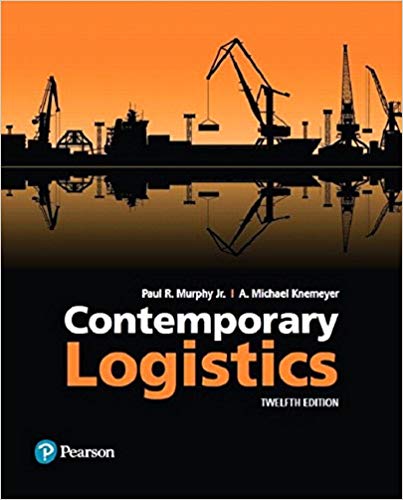Answered step by step
Verified Expert Solution
Question
1 Approved Answer
In the past three or so decades, Western manufacturers have pursued world-class manufacturing status through a shotgun blast of three-letter acronyms: TQM (total quality management),
In the past three or so decades, Western manufacturers have pursued world-class manufacturing status through a shotgun blast of three-letter acronyms: TQM (total quality management), JIT (just-in-time), DFM (design for manufacturability), QFD (quality function deployment), QPD (quick product/process development), CIM (computer integrated manufacturing), ERP (enterprise resource planning), SRM (supplier relationship management), CRM (customer relationship management), SCR (Supply Chain Resilience), DCM (Digital Capabilities Model), GenAI (generative artificial intelligence), and so on. The power of many of these NAO/S (new approaches to operations/supply chain for the purposes of this discussion, I am using the terms, operations, and supply chain, interchangeably to mean the same) in improving quality, production scheduling, product development, supplier management, etc. has been forcefully demonstrated in a number of leading companies such as AT&T, Hewlett-Packard, Motorola, Xerox, etc. leading thousands of others to strive to emulate them and their Japanese role models. Despite many remarkable successes, depicted in glowing accounts in the business media, a number of subsequent studies revealed a disturbing pattern of failure (though the jury is still out on the more recent NAO/S). Even efforts initially labeled as successes often turned out to be so only up to a point after which, improvements stagnated or even regressed. For example, the Big Three automakers as a whole had quality records that were below the average, and they were losing market share in all vehicle categories. The conclusion of most large studies has been that only a third of the companies that attempted to implement the most popular NAO/S achieved the results expected by the companies own admissions. In the few studies that asked customers and suppliers, rather than the companies themselves, to evaluate the overall effectiveness of such programs, the success rate was even lower. For example, an extensive study of 584 companies in Canada, Europe, Japan, and the US conducted jointly by Ernst & Young, and the American Quality Foundation found that most TQM programs had achieved shoddy results. Other studies suggested that only a third or less of those same programs had had a very significant effect on their companies market success. Similarly, a Bain & Co. survey of managers evaluations of NAO/S found that 81 % of the respondents felt that the NAO/S promise more then they deliver. As a result of (and possibly contributing to) such dissatisfaction, the survey found that the average company had tried ten different management tools across different NAO/S. A number of attempts to link TQM activities with corporate financial success have also produced troublingly ambiguous results. For example, although one might reasonably assume that a company that successfully implemented NAO/S faster than its competitors would achieve superior financial results, it would be difficult to measure any individual financial benefit if all the companies in its industry were making similar improvements. As a result, it is difficult to find evidence that the widespread adoption of NAO/S has been somehow superior to the steady operating/supply chain improvements that US companies have been making ever since aggregate productivity first began to be measured nearly six decades ago. Such findings have resulted in a growing cynicism among top managers such that it has been called the steady coming and going of popular NAO/S . is another sign of an underperforming CEO. There is deep cynicism in the ranks too as employees feel that they have been fragmenting their time trying to implement a blizzard of buzzwords, expanded each time one of their top managers attended a conference, read the latest secrets of success management book, or hired a consultant. Why has the success rate of programs to implement these NAO/S, despite their great promise, been so low? Looking beyond the NAO/S, the adherents of lean manufacturing, process reengineering, benchmarking, etc., in fact, must also confront the problem as to whether, if their new dominant design is correct, then the strategic role that operations/supply chain can play is much reduced. In effect, these programs force managers to restrict their strategic thinking to deciding which currently fashionable improvement technique to adopt next, and abandon strategic analysis in favor of say benchmarking (I am picking benchmarking as an example) identifying and adopting the best practices of other companies. US operations/supply chain managers are not alone in their surrender to such faddishness. Many Japanese companies similarly fell into the trap of following the same strategy; so, like passengers on a ferry, they have swamped the vessel by all simultaneously running to the same side of the boat for the best view. Striving to be lean or even world class seems insufficient, and in fact, maybe somewhat simplistic. At best, you end up only as good as (and no better than) your toughest competitors, and find yourself playing catch-up with them. How can one reconcile all the above with the anecdotes about companies that became lean and mean (though leaner and meaner maybe too much of a good thing as there is criticism now that the resultant famished and fragile supply chains have exacerbated the Covid-induced global supply chain crisis) through right-sizing, delayering, and reengineering; and closer to their customers through attention to quality, response time, and faster product development
Step by Step Solution
There are 3 Steps involved in it
Step: 1

Get Instant Access to Expert-Tailored Solutions
See step-by-step solutions with expert insights and AI powered tools for academic success
Step: 2

Step: 3

Ace Your Homework with AI
Get the answers you need in no time with our AI-driven, step-by-step assistance
Get Started


